1993 Bell-Fruit / Attention to Detail
Platform: Arcade
What happens when you smash together Gremlin, arcade manufacturer Bell-Fruit and development team Attention To Detail? Well, back in 1993, the result was to be an arcade release of Gremlin’s popular ninja platformer, Zool.
With BF/ATD looking to create a series of arcade games, they hooked up with Gremlin at the 1992 September European Computer Trade Show and felt that Zool was a perfect candidate for their new upcoming arcade hardware. Amiga Action magazine reported at the time that BF/ATD would be mostly handling a conversion, with Gremlin just overseeing. The aim was to produce around 2000 cabinets for release, and along with Zool, Rise of the Robots was also to see a transition to arcade too.
Zool Arcade was by no means a direct port of the Amiga game. Although to feature all the original worlds and levels, ATD were coding the game from scratch and increasing the levels up to around 100 in total. This was no simple conversion or an Amiga simply shoved into a cabinet – the game was to utilize new impressive 32-bit technology built by ATD.
Of course, we wouldn’t be talking about the development unless there was some kind of “unreleased spanner” in the works. The production of 2000 cabinets would never materialize, but that isn’t to say that this was merely vapourware. Bad Influence would give some evidence to that, by featuring an early prototype in Series 1, Episode 13:
It was only ever a rolling demo at this stage, with Andy Crane doing a pretty unconvincing job to prove that it was anything but. However, it was a clear indication that ATD had got something well underway, and looking far beefier compared to the 16-bit versions.
A number of prototype cabinet photos have surfaced over the years since then, some even showing pictures of the PCB setup itself. They indicated that the game also intended to feature a second player option, which was confirmed by Control magazine’s feature on the development, with each player to play alternately.
Building upon the original, a special animated intro and new level designs were created by Gremlin to jazz things up. ATD’s new hardware would afford the ability to also add in further parallax scrolling and up the colours to 256 on screen at any time. Edge magazine show off a few screens from their intro and also a rare shot from the arcade development itself, which you can see below.
“The system was known as RasterSpeed and was hoped that it would make the process of getting a game into arcades a far cheaper process overall.”
The hardware itself by ATD was a new system based around an Intel 486-type processor, with the intention to make it easier to convert PC games into arcade ready titles with minimum of effort. Although according to one source, it bore no actual resemblance to PC architecture. Invented by Martin Green (with we believe James Torjussen involved too), the system was known as RasterSpeed and was hoped that it would make the process of getting a game into arcades a far cheaper process. As a side note, Martin dug out a 1994 group post talking more about the technology, which you can find here and is well worth a read.
In 2023, Andrew Wright got in touch to reveal a little more about the RasterSpeed project:
“I was employee number 2 at ATD, employed to work on the RasterSpeed project, initially writing a simulator, since the hardware didn’t yet exist. I wrote the sort algorithms and library functions called by game software. Later I worked with the hardware engineer (an external subcontractor) to get the hardware running.
We were using a programmable chip (Xlink?) that let the engineer alter the hardware instantly. This design was finally implemented on some kind of cheaper non-programmable chip for the final design. That chip ran faster, and we realised we could have supported double the vertical resolution, but we would have needed to know if a frame was odd or even, and it was too late to add that feature. I still have a prototype board in my loft, I think.”
Martin couldn’t recall much about the Zool development itself, or who exactly was behind it. Amiga Action suggested that ATD’s Chris Gibbs was the developer, but this was never the case at all. “James (Jim) Torjussen (founder/co-director at ATD) was actually programming Zool.” began Chris Gibbs. “We were also getting technical support from the original dev team at Gremlin Graphics in Sheffield. Just watching the [Bad Influence] video … So they mention new levels… Hmmm, that rings a bell, but I cannot recall any design work being done on them at ATD. Maybe Gremlin’s team were providing them to us? Yes. that feels familiar!”
Chris apologises for his fading memories, which is understandable given that its almost 30 years now and due to his lack of direct involvement. However, it seemed much was still relatively clear and memories started to come back the more we spoke. Chris would first of all confirm the utilization of Martin and Jim’s new hardware. “RasterSpeed was hardware optimised to render 2D game-style scenes extremely quickly and Zool was a perfect showcase for what it could do.” recalled Chris. “We saw Zool as a technical conversion, as opposed to one of our original titles, and as such, I don’t think I was that focused on it. It was more Jim’s responsibility at the time.”
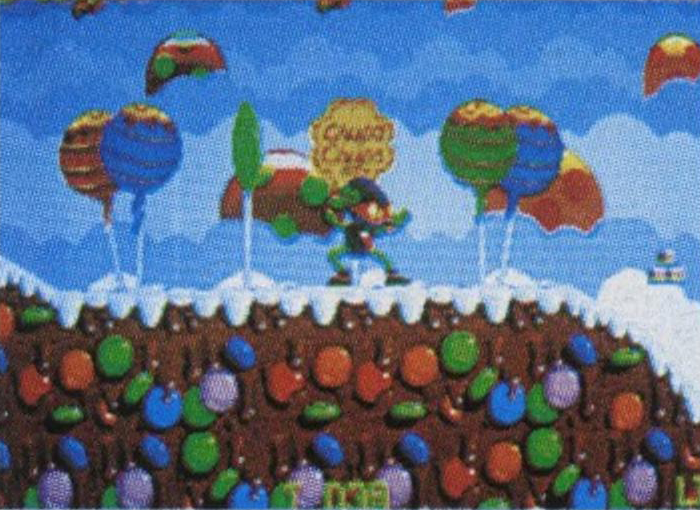
One thing that couldn’t be recalled exactly by Chris was about how far the development had actually got. The rolling demo was still quite vivid, but recollections of seeing new levels and further development were a little more jaded in comparison. One clear recollection though was that development was taking perhaps longer than anticipated.
“My overriding memory was a frustration of how slow the development seemed to be taking.” explained Chris. “To be fair to Jim, he was a talented technical coder but not at all a games programmer. Maybe the project was slowed up waiting for new elements from Gremlin? Maybe we were still trouble-shooting RasterSpeed hardware? I don’t recall specific hurdles – just a sense that the conversion process was taking longer than planned for some reason. I kept expecting to see more playable levels but they didn’t show up! I do recall that we were pleased with the hardware performance – the benchmark rendering speeds were impressive at the time. I think the smoothness of the demo in the video supports that.”
To find out just how far the Zool development got, we need to speak with Jim himself. Although managing to track him down during our research, unfortunately he didn’t respond to initial contact attempts. We’ll keep trying and update this piece once we do hear anything or have more to add.
“My overriding memory was a frustration of how slow the development seemed to be taking.”
When asked why the development was cancelled, Martin couldn’t recall. Chris wasn’t 100% certain either, but vaguely recalled a version going on test in several arcades and not getting enough plays/cash to warrant a full rollout. Admittedly, Chris suggested that he could be getting mixed up with another title, as this was what had certainly happened to Rise of the Robots according to Bell-Fruit.
Rise of the Robots had tested poorly and as a result was also scrapped like Zool. According to Glenn Stubberfield over at gemubaka.com in a comments thread, the hardware was eventually used in at least one commercially released game named Football Crazy, but that was it. Thankfully a prototype of Rise of the Robots managed to survive, which gives great encouragement that similar could happen with Zool – but what really are the chances after so much time passing?
“I would say there is a remote chance of finding the codebase.” suggested Chris. “We had a system of daily tape backups of all work, which we religiously deposited at our bank’s safety deposit box, with a weekly master tape!”. That promising revelation from Chris means that we are already trying to get in touch with one or more people who were the keepers of the backups, so hopefully something may surface in the near future.
Not long after publication of this post, Mark Hardisty (author of A Gremlin In The Works) got in touch to pass on a photo of the actual arcade marquee out of the blue. Kept by Ian Stones who worked at Gremlin, it was revealed that the actual finished arcade machine lived in the Gremlin canteen for many years. It was fully operational, but had performance issues.
It was a promising development indeed, and renewed hope that the machine could be found and the data recovered from it to try and get running once more. However, Ian revealed that the reason he had the marquee was because the arcade was tragically skipped. Staggeringly sad to hear, especially when they must have known how unique what they had was!
All hope now sits with finding the developer and seeing if they by any chance kept hold of anything in relation to the game.
With thanks to Martin Green and Chris Gibbs for their generosity and time, to Mark Hardisty for his help and supply of marquee image, Andrew Wright for sharing details about the RasterSpeed project, Ross Sillifant for some of the magazine scans and initial heads up, David Brunet for creating a French translation of the article, plus Stone-Oakvalley and arcade-museum.com for additional images.
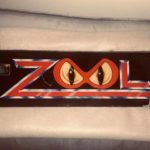
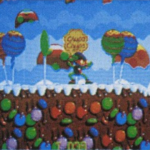
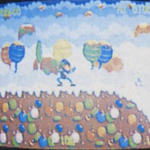
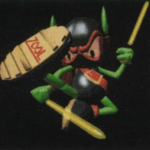
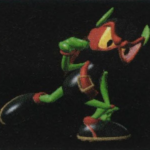
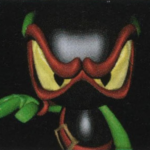
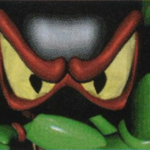
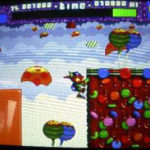
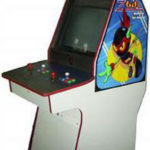
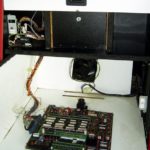

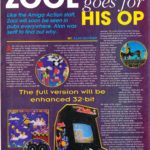
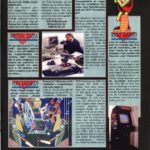



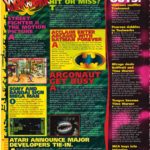
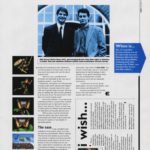


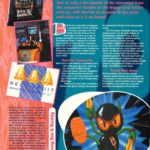

I was employee number 2 at ATD, employed to work on the RasterSpeed project, initially writing a simulator, since the hardware didn’t yet exist. I wrote the sort algorithms and library functions called by game software. Later I worked with the hardware engineer (an external subcontractor) to get the hardware running. We were using a programmable chip (Xlink?) that let the engineer alter the hardware instantly. This design was finally implemented on some kind of cheaper non-programmable chip for the final design. That chip ran faster, and we realised we could have supported double the vertical resolution, but we would have needed to know if a frame was odd or even, and it was too late to add that feature. I still have a prototype board in my loft, I think.
Thanks very much for posting Andrew, and sharing some fascinating background to the RasterSpeed project. I’ll add your comments into the main piece with a credit to yourself.
It is a huge shame that it never got to be fully utilized as intended – we’re still hopeful that something of Zool can be found some day.
hello Andrew.
I am curious to know would you consider selling your prototype Rasterspeed board if you can locate it?
please let me know: gstubberfield@yahoo.com
thank you
Glenn
Wonderful article on a legendary arcade machine.
Thanks so much for the shout out as well :)
My hope is to at some point own the non-working Rise arcade machine that is currently out there…
For me both Rise and Zool arcade are up there with any of the rarest Atari and Midway prototype cabinets.
A fantastic piece of gaming history.
Thanks for the greast read.
No worries at all Glenn, and thanks for the kind words. Good news is that it seems a complete arcade did exist and may still exist too.
Zool on arcade is like the forbidden fruit .
It is taking dust in some warehouse in this world though…
Nice article, thanks!